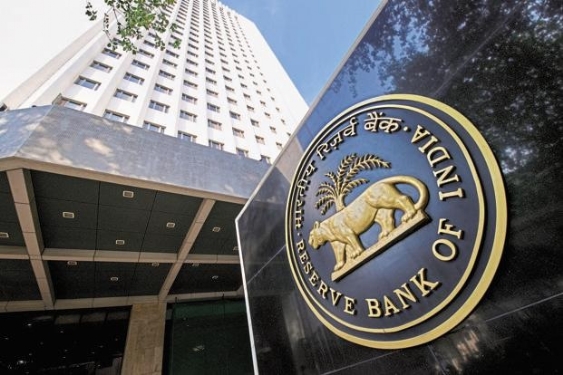MediaNama’s take: As per studies, only 25% of India’s rural population engages with formal banking, in contrast to 70% in the US and 60% in China. This arises from factors like a lack of reliable access to smartphones, the internet, or low digital literacy. Through its new directions, the Reserve Bank of India (RBI) takes a step forward in promoting financial inclusion by providing a non-digital alternative for financial services to those who are unable to access digital options.
What’s the news?
The RBI has prohibited banks from mandating customers to use digital banking channels for accessing services like debit cards, emphasising that the ultimate choice lies with the customer. “While it may be more convenient for the customer to opt for some services together (for example, virtual access to card controls), the choice to apply for digital banking services shall lie solely with the customer,” the RBI outlined in its draft Digital Banking Channels Authorisation Directions, 2025.
Nonetheless, banks can obtain and record customers’ mobile numbers to send transaction alerts while complying with the Know Your Customer (KYC) requirements when opening an account.
The guidelines define ‘Digital banking channels’ as methods including websites (internet banking), mobile phones (mobile banking), or other digital services used by banks to conduct financial and banking transactions. These also include automated processes and cross-institutional service capabilities.
The central bank has invited stakeholder comments and public feedback on the directions by August 11, 2025.
Types of services offered
The guidelines also prescribe various features of digital banking channels as follows:
Viewing only banking facility: This feature includes only banking services that refrain from altering customers’ assets or liabilities via balance enquiry, viewing, and account statement download. Notably, only banks with a core banking solution (CBS) implementation and a ‘public-facing’ IT infrastructure that handles Internet Protocol Version 6 (IPv6) are eligible to provide this facility. Further, banks should inform the RBI’s concerned regional office and furnish a copy of a ‘Gap Assessment and Internal Controls Adequacy’ report within 30 days of the service’s commencement.
Transactional banking facility: This feature of digital banking channels allows fund-based or non-fund-based banking services. Banks should meet certain eligibility criteria before applying for approval from the RBI.
- Full implementation of the CBS and IT infrastructure to handle IPv6.
- Compliance with the minimum regulatory Capital to Risk-weighted Assets Ratio (CRAR) requirement.
- Net worth of Rs 50 crore or as per the minimum regulatory requirement, whichever is higher.
- Presence of adequate financial and technical capabilities. The applicant should submit a detailed report including the expected expenditure for the facility in the next five financial years, cost-benefit analysis, and third-party technology service providers (if any), among others.
- A previous record of regulatory compliance with cybersecurity guidelines and an adequate internal control system. Aspects like a gap assessment report certified by CERT- In empanelled auditors, the absence of major cautions in the Information Security (IS) Audit report over the last two financial years and inputs of the bank’s supervisory authority should be taken into account here.
Obligations of digital banking channels
To begin, the guidelines prescribe that banks shall continue adherence to several norms, including the IT Act 2000, the Foreign Exchange Management Act (FEMA) 1999, the Payment and Settlement Systems (PSS) Act 2007, KYC directions, and others. Banks should also abide by existing technological guidelines.
Moving forward, the guidelines outline several customer conduct and other instructions.
Consent:
Banks should obtain explicit customer consent for providing such services and duly record the same. They should also communicate the prospect of sharing SMS/email alerts to the customers’ contacts registered with the bank.
Advertisements
Registration:
The bank may provide multiple channels for such registration to reduce the need for branch visits and application processing time. The terms and conditions should be communicated in clear and simple language, including Hindi, English, and the local language that the customer understands. This should incorporate details of any charges levied, timeframe, process to initiate stop-payment instruction, grievance redressal mechanism, etc.
Fraud protection:
Banks should comply with consumer protection guidelines, including limiting liability in unauthorised electronic banking transactions.
Risk mitigation:
The bank should establish risk minimisation measures like transaction limits, fraud checks, and transaction velocity limits, depending on its risk perception. Stricter requirements as prescribed by the RBI or payment system operators like the National Payments Corporation of India (NPCI) will apply.
Further, banks should incorporate a risk-based transaction monitoring and surveillance mechanism. This could include studying customer transaction behaviour patterns or obtaining prior confirmation from customers for outlier transactions as per the bank’s Fraud Risk Management Policy.
Third-party products:
Banks should refrain from displaying third-party products and services, including those from promoter groups or bank group entities, on their digital banking channels unless explicitly permitted by the central bank from time to time.
Exemptions:
The RBI may exempt entities or extend deadlines for compliance if it determines that doing so is necessary to avoid hardship or for other justified reasons.
Also Read:
Support our journalism:
For You
Source link







